 Cover: G.Miele/guidesmart
Cover: G.Miele/guidesmart
The province of Frosinone offers a series of marvellous beauties, such as small villages surrounded by nature, which seem to have been crystallised in time and still retain their medieval appearance.
Let us therefore see what attractions are not to be missed if you choose to organise a tour of the area, which is easy to reach and full of surprises in terms of history, culture and landscape.
Fumone![]() is only 69 km from Rome, but along the way you can come across fascinating villages such as Anagni
is only 69 km from Rome, but along the way you can come across fascinating villages such as Anagni![]() , Fiuggi
, Fiuggi![]() and Ferentino
and Ferentino![]() .
.
 How to reach Fumone
How to reach Fumone
Via the Autostrada del Sole motorway, it is possible to reach Fumone either by taking the Frosinone or Ferentino exit.
The same goes for the train, getting off at the stops in the towns we have just mentioned, and taking one of the available public means of transport.
Around the walls it is possible to take advantage of convenient parking facilities, walking along the narrow, pedestrian streets.
 What to see in Fumone
What to see in Fumone
– Historic Centre
Visiting the historical centre of Fumone will feel like being projected into a postcard, with suggestive views of the surrounding landscape and stone houses with an ancient flavour.
It is a maze of alleyways enclosed within a well-preserved city wall, a reminder of how, in the past, there was a strong need to defend oneself from enemy attacks.
During the walk through the village, two quick stops cannot be missed. The first is at the Collegiate Church of Santa Maria Assunta![]()
 , built in the 12th century, where the main nave features a fresco depicting the death of Pope Celestine V, while the second is at the small Gothic church of San Gaugerico
, built in the 12th century, where the main nave features a fresco depicting the death of Pope Celestine V, while the second is at the small Gothic church of San Gaugerico![]()
 , built in the 14th century.
, built in the 14th century.
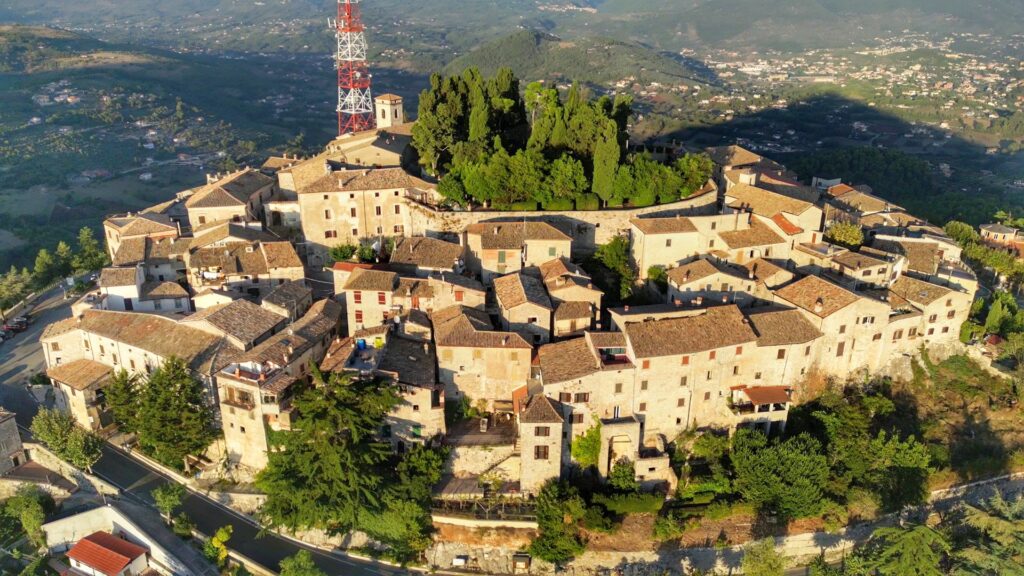 – The Longhi-De Paolis Castle
– The Longhi-De Paolis Castle
At first glance, the Longhi-De Paolis Castle ![]() appears even more impressive because it is surrounded by olive and cypress trees, with the hills providing a splendid backdrop.
appears even more impressive because it is surrounded by olive and cypress trees, with the hills providing a splendid backdrop.
Situated at 784 metres above sea level, the building is known in history as the “Terrace of Ciociaria”. Inside the fortress is the highest roof garden in Europe , with a vaguely trapezoidal layout, it has a surface area of around 3500 square metres and stands 803 metres above sea level, and is placed on two different levels: the upper structure, of about 2000 square metres, is characterised by the subdivision into regular compartments bordered with box hedges, placed on the sides of a central avenue flanked by cypress trees, ending with a 2nd-century AD Roman column in Luni marble.
, with a vaguely trapezoidal layout, it has a surface area of around 3500 square metres and stands 803 metres above sea level, and is placed on two different levels: the upper structure, of about 2000 square metres, is characterised by the subdivision into regular compartments bordered with box hedges, placed on the sides of a central avenue flanked by cypress trees, ending with a 2nd-century AD Roman column in Luni marble.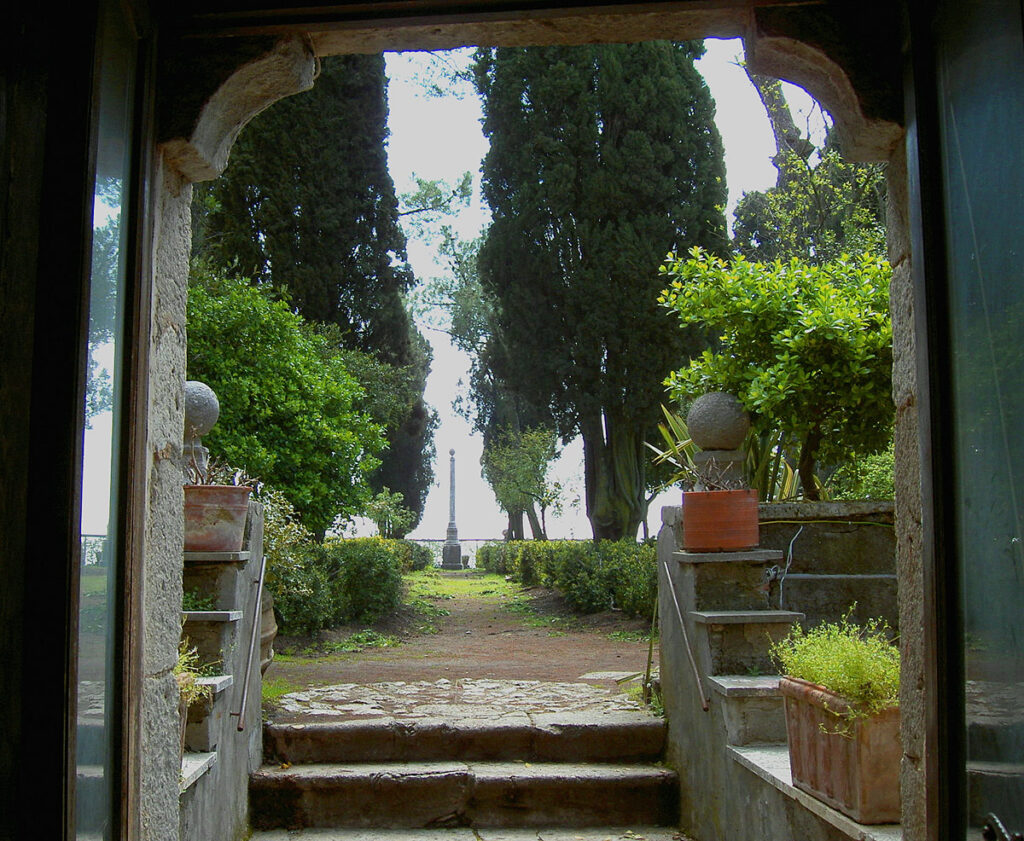
A second, lower level was built in the early 1700s and is characterised by the presence of centuries-old laurel trees. Inside is the “tree of love”, a gigantic cypressus funebris, the result of the unification of two trees. The castle is most famous for having been the prison, as well as the place of his death, of Celestine V  during his imprisonment. On the day of his death, inside the fortress, the Pope ‘of the Great Refusal’ is said to have performed a miracle, which is why he was proclaimed a saint just twelve years after his passing.
during his imprisonment. On the day of his death, inside the fortress, the Pope ‘of the Great Refusal’ is said to have performed a miracle, which is why he was proclaimed a saint just twelve years after his passing.
On top of the stronghold once stood a high tower, which served as a lookout post and communicated with the others in the neighbouring castles, so as to warn the whole territory in case of incursion. In fact, the smoke that was produced communicated throughout the countryside, and the surrounding areas, that enemies had entered the Via Casilina, and warned the population to find shelter. This gave rise to the popular saying: ‘When Fumone smokes, the whole countryside trembles’.
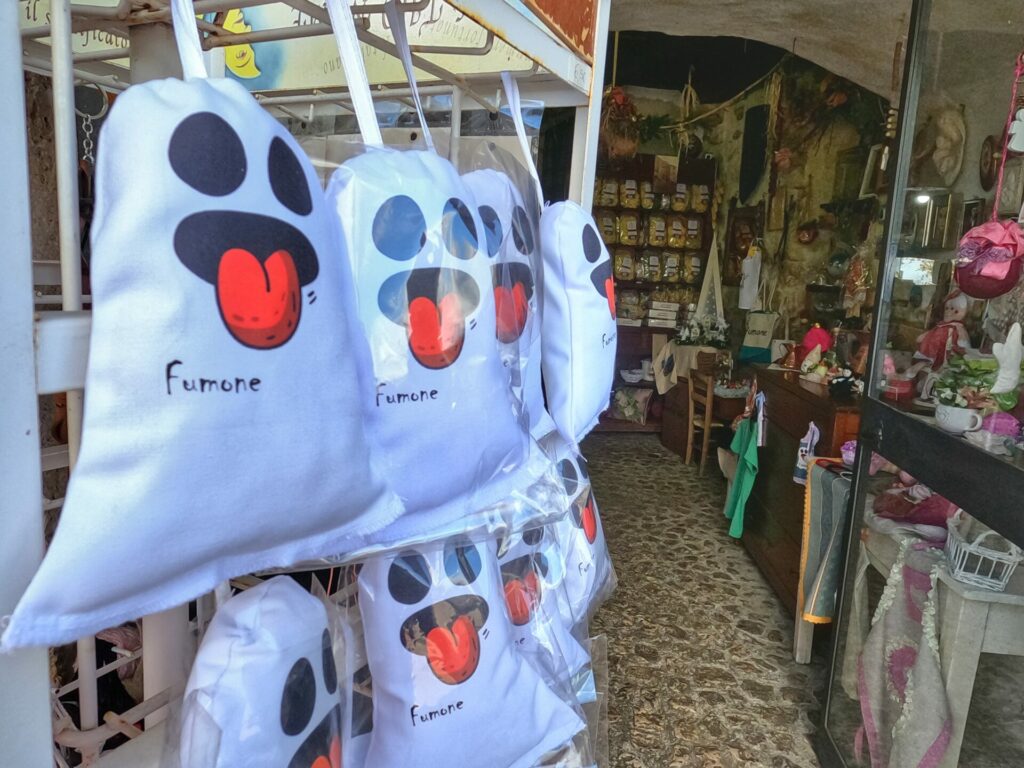 -The Mysteries and Ghosts of the Castle
-The Mysteries and Ghosts of the Castle
The Castle of Fumone was for five centuries a prison of the Papal States, a history of imprisonment, violence and death, ignites the imagination, inside the fortress it is rumoured that there are at least eighteen ghosts. The first is that of Antipope Gregory VIII , who died in Fumone in 1124, and whose burial place still remains a mystery, because it has never been discovered.
, who died in Fumone in 1124, and whose burial place still remains a mystery, because it has never been discovered.
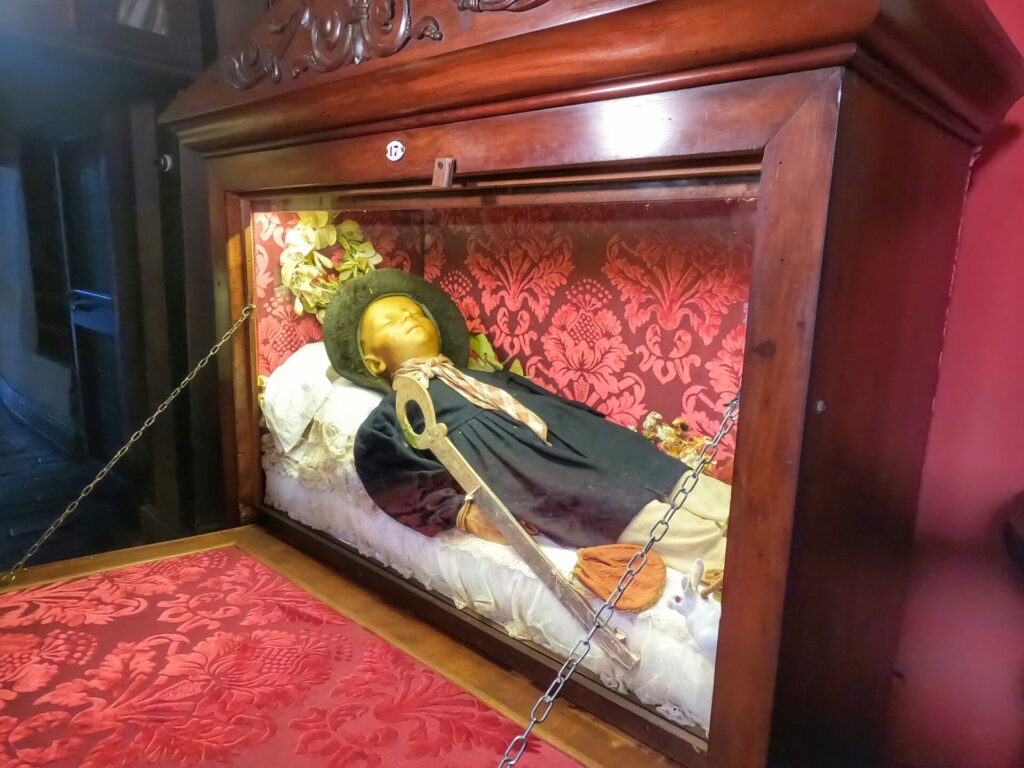 But without a shadow of a doubt, the most representative presence in the castle, the superstar, is that of the little Marquis Francesco Longhi. Legend has it that the child, of noble birth, was poisoned with arsenic (or bits of glass) by his seven sisters. It is said that the Marchesine, jealous, would have killed him for mere reasons of inheritance, since the little brother would have inherited everything, condemning them to novitiate in a convent, or to an arranged marriage.
But without a shadow of a doubt, the most representative presence in the castle, the superstar, is that of the little Marquis Francesco Longhi. Legend has it that the child, of noble birth, was poisoned with arsenic (or bits of glass) by his seven sisters. It is said that the Marchesine, jealous, would have killed him for mere reasons of inheritance, since the little brother would have inherited everything, condemning them to novitiate in a convent, or to an arranged marriage.
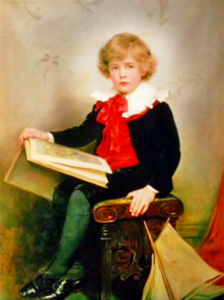
Jealousy was also due to the fact that the marquise, mother of the child, showered her son with attention. After the mourning, the marquise fell into a state of severe sadness and categorically refused to bury her beloved son, having him embalmed to keep him close. She also had all traces of joy erased from the paintings.
Some claim that every night the woman in distress goes to the room where her little son’s body is kept to cuddle and pamper him. Paranormal presences have been detected, by those who have made ghosts their scientific research, who with sophisticated techniques have tried to ascertain if there were any presences; even identifying an anthropomorphic form next to the shrine.
Inside the fortress there would have been other crimes, here there is also the ‘Well of the Virgins’; where newly-married girls who did not arrive for the ‘jus primae noctis’ were rushed, or thrown.
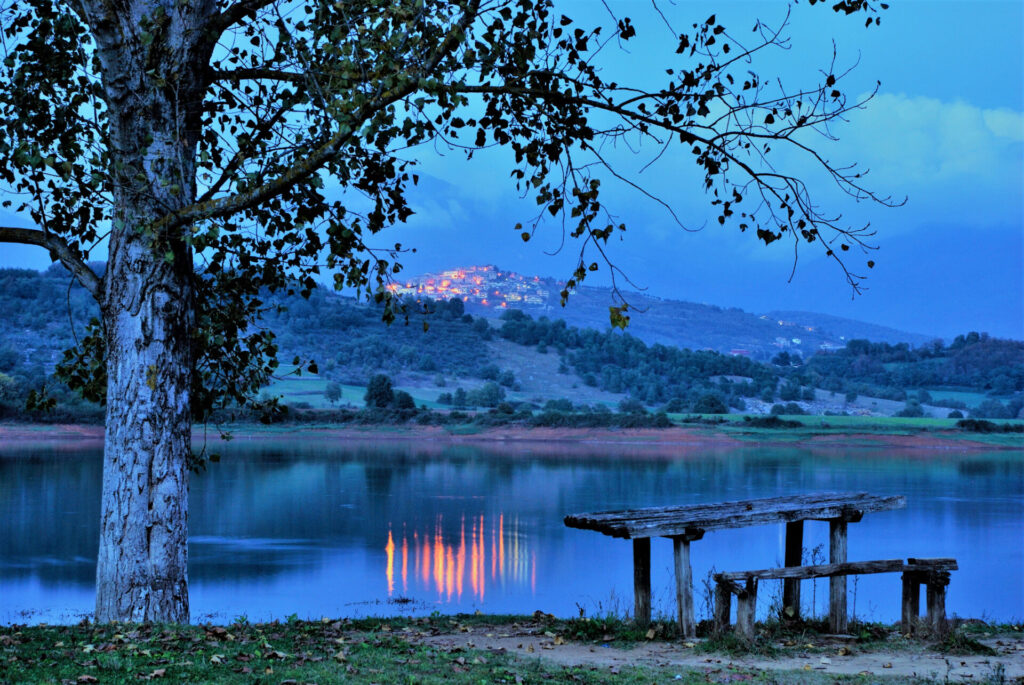
What to visit in the surroundings
Fumone is located near Canterno Lake ![]() , a pleasant and suggestive location for an enjoyable and easy trekking in the midst of nature.
, a pleasant and suggestive location for an enjoyable and easy trekking in the midst of nature.
It is a well-preserved nature reserve, which accompanies other interesting stops on the tour.
Where to sleep
Fumone, but above all its surroundings, offers various types of accommodation to suit all tastes. In the historic centre you can find small hotels, holiday homes or B&Bs, characteristically styled and very convenient for exploring the area. Outside the walls there are agritourisms located in the hills, connecting with the natural and bucolic dimension of the place.
The costs are quite low, even in high season such as spring or autumn.
What to eat
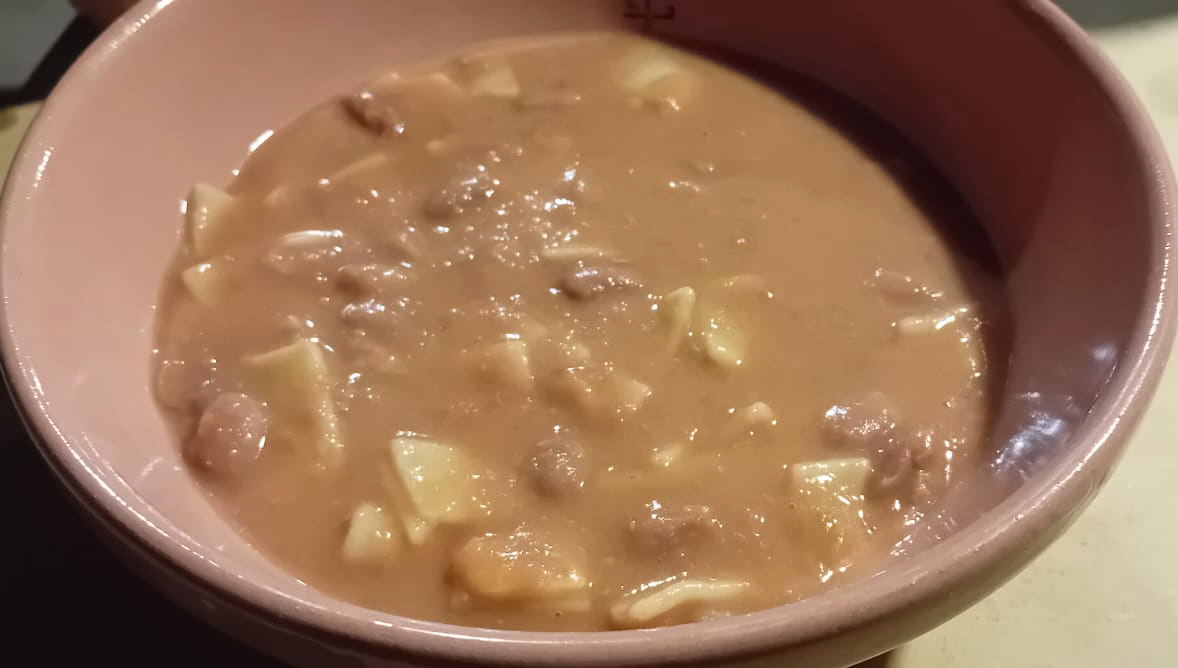
Fumone is located in the food and wine context of Lazio, so it offers a series of delicious typical dishes.
First courses are based on meat, mushrooms and truffles, but also pasta with legumes, such as pasta and beans with pecorino cheese. Main courses include sausages, meat or poultry served with local vegetables or potatoes.
There is no shortage on the menus of all restaurants of penne all’arrabbiata, which with their spiciness become the undisputed stars of the meal, or gnocchi with wild boar ragout.
Typical desserts are the ciambelline al vino, excellent for ending lunch or dinner on the right note of sweetness.
Come and discover what Fumone has to offer for a trip of a few days, visiting both the historical centre and all the neighbouring beauties and enjoying a varied nature in the different seasons of the year.
Photo credits: ©G.Miele/guidesmart, ©alessandro_pinto/iStock, visitfumone, proloco fumone, ©mazurskiwiatr/pixabay.com, ©Hartmann Schedel/Wikimedia Commons, ©Marie-Lan Nguyen/wikimedia
